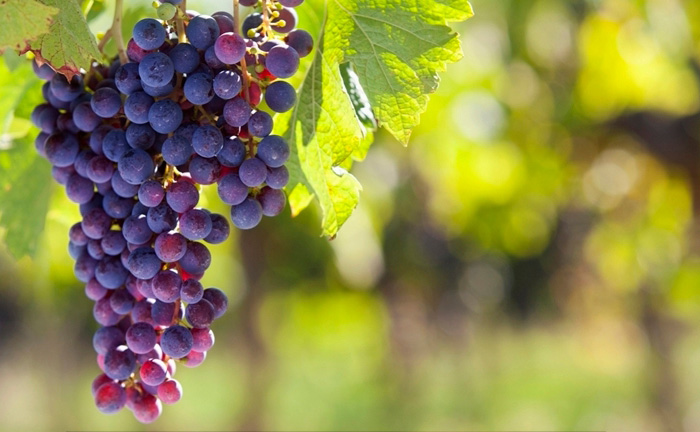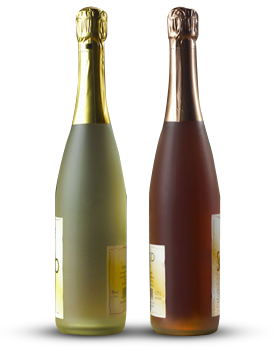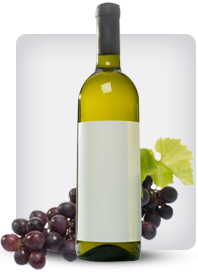

Category: Zinfandel Wine
A Portuguese Wine Journey
Posted onPortugal is known for many things, its great beaches, fantastic golf facilities and year round sunshine being just the icing on the cake for one of the most popular holiday destinations in the world. One of the things that Portugal is renowned for is its many wine producing regions that create some of the finest tasting wines. If you go into any supermarket you are bound to see several bottles of Portuguese wines from across the country, whether you prefer red, white or rose there is bound to be something to please your palate! If you are a wine buff or just fancy an excuse to explore this fascinating country, a wine tour is a great way to impress your friends at the next dinner party.
One of the things that make Portuguese wines so special is that many of the small vineyards are populated with grapes that are unique to Portugal. Many locals believe that in order to really get a taste for the country it is necessary to sample some of the wines, which is handy for those about to embark on a wine tasting tour! The first stop on any Portuguese wine holiday is Dao which produces some of Portugal’s best red wines. Situated in the north of central Portugal below the stunning Douro River, Dao is one of the most spectacular places that you will visit on your wine journey.
On the opposite side of the wine spectrum are the delicious Vinho Verde white wines that come out of the northwest of the country. The name of the wine literally translates into ‘green wine’ which refers to the fact that the grapes grow in a picturesque green valley along the coastline. From green to brown, the Barraida vineyards are the next stop on the wine tour and take visitors into an area steeped in controversy.
Back in the 18th century Barraida was deemed unsuitable for lawful port production due to an adulteration scandal. The vineyards were ripped out however centuries later they are back to their best and produce many dark, fruity wines. The word ‘Barraida’ literally means ‘clay’ which is connected to the brown soil that dominates the area. Port lovers will appreciate the final stop on this Portuguese wine journey, Douro is known by many to be the ‘Port Country’ and is responsible for some of the richest ports in the world.
If the thought of sampling just a selection of these wines has you reaching for the corkscrew, make sure you take advantage of this fantastic holiday opportunity. Never has a holiday in the sun tasted so good!
Related Zinfandel Wine Articles
Wine Aerators Reviewed
Posted onGiving your wine time to breathe is essential to getting the true experience of a wine’s flavor and feeling. If you’ve previously been just opening up a bottle and drinking it immediately, then the simple change of giving wine time to breathe is going to make a huge difference in your enjoyment of the wines you choose.
The effect that this will have is going to depend heavily in the kind of wine you choose. If you’re drinking a younger wine, giving it time to breathe is going to mellow out the harsher notes and make it a more pleasant experience. The effect on older wines is almost the exact opposites, as it brings out lost flavors and allows you to taste subtle flavors that you might miss if you were just going to drink it straight from the bottle.
The problem with this is that while giving the wine time to breathe, it also means that you have to decant the wine and allow it in the mix with the air so that the molecules of the wine have time to interact with the oxygen in the air. While this works, it’s also incredibly time consuming.
Which is why some enterprising folks have created wine aerators, which are designed to allow the air to mix with the wine as your pour, so that you can enjoy the full flavor of wine without having to decant and wait. If you’re someone who wants to enjoy your wine without having to go through the whole ritual first.
Like anything else, not all wine aerators are created equal. The two main things to consider with wine aerators are how well they work and their aesthetics. You need a wine aerator to actually do the job it was designed to do, and you also want something that’s going to not look like something created by a glassblower who had a sneezing fit.
A wine aerator that is extremly popular in the UK is beginning to make itself known as an essential part of any wine lover’s kitchen in the United States. This wine aerator has a great rep, but does the actual device live up to the hype.
The first and by far the most important thing to consider is whether or not the Wine aerator does what it’s intended to do: does it bring out the full flavor of the wine. The answer is an unequivocal yes.
The design is where it takes its name from; as it weaves the wine around the air, a process that gives you an optimum mix of air and wine, and it really b rings out the subtle flavors of virtually any wine. It’s also designed so that it can work with both a decanter and individual wineglasses, which makes it a very flexible aerator.
The functionality would probably be enough to recommend the Weaver on its own, but it’s a pretty nifty piece of work. It’s made out of more or less unbreakable polycarbonate in a beautiful design, so you’ll be happy to have it on your table.
Making Wine at Home
Posted onPeople’s love for wine has extremely grown today. Not just in some countries but all over
the world. This is reason enough that the need to know how to make homemade wine is
tremendously increasing for personal consumption. Wine making equipment and supplies
today are readily available in stores anywhere. It allows wine lovers to make it possible
for themselves to stack their wine racks with their own homemade wines. The best thing
you get in making wine by yourself is fulfillment and contentment for the efforts spent.
For many years people have tried making their wines especially red and white wines at
home and have failed. As more people have tried to make this a hobby the materials,
supplies and recipes are being improved. The wine making kits help a lot and more
people learn to love and make home wine making their leisure and gratification. There
could even be times when some group of wine lovers exchange recipes to improve the
flavor of their own batches. How one person appreciates his/her homemade wine would
not be the same as how others would also value theirs. However, the kits available for
making homemade wine help make unswerving and dependable results so that more
people would enjoy the same wine.
For special family occasions like Christmas, birthdays, anniversaries, reunions and other
more wine makers and lovers may make special wines in preparation for these occasions.
This would make the special day enjoyable. As you look forward to the gathering, you
can time the preparation of your vintage as you know when to bottle and how long the
aging period is in time for the occasion. You also will reap financial benefits by making
your own wine at home. Wine connoisseurs will only tell you that the more expensive
the wine the better it tastes, but this is not true all the time. The more you keep on
making your own home made wine soon you will be able to produce an excellent and
exceptional tasting wine.
Normally, the more you learn about something the more you learn to appreciate its
complexities. The more you would love to do it. The same thing goes with wine
making at home, the more you learn to make it, the more you will love to do it.
As you keep doing this, in just a short period of time you’ll find yourself into that hobby
and wine making at home will be your passion then. You will absolutely enjoy it, even
your family and friends will get into your passion. Dare yourself…Homemade wine
making is really a grand and exciting learning experience. Make it a hobby, be satisfied
and enjoy.
Find More Zinfandel Wine Articles
Growing Wine Grapes
Posted onWhile growing wine grapes, the basic thing to remember is that each grape variety is unique in its own way with its own distinct flavor and characteristics. Grapes from the Vitis vinifera family are the most commonly used variety of grapes used for wine making. Usually this variety is found in Europe but there are varieties that are abundant in North America as well. The Vitis Labrusca is another popular variety and is commonly found in eastern parts of United States and Canada.
Success in growing wine grapes largely depends on suitable climatic conditions and the variety of vine you choose. These are the most important factors in growing wine grapes which ultimately decide the quality of grapes. Extreme climatic conditions may destroy the whole crop and it cannot be imagined how destructive it can be. Under ideal conditions such a variety should be chosen which ripens during the cooler temperatures instead of summers.
Though soil condition is important for any type of vineyard, they can still be manipulated by adding fertilizers and minerals. The most important thing is to provide necessary mineral content to the roots. You need to test the soil and see if it is free of toxic mineral content. Irrigation channels can be provided so as to make sure that that there is enough soil moisture level.
However, climatic conditions cannot be changed and the only way you can probably provide somewhat better climatic condition is by application of greenhouse transplant. So make sure that the fruit varieties you choose have a proven track record of growing properly in the climatic zone you wish and desire to grow your wine grapes. This will help you greatly in improving your chances of an excellent harvest of grape wine.
It may so happen that you don’t have an alternative. However, in case you are successful in choosing your area for growing wine grapes, care should be taken to avoid such areas where there are very low winter and spring temperatures. Moreover you should also avoid such areas where there is frequent or excessive change in temperatures or there are early frost fall.
Avoid Vine Direction Disasters
Since frost plays a very destructive role in growing wine grapes, you should see to it that you don’t choose lowlands for cultivation since these are the areas where frost hits the hardest. Usually frost settles in these areas first and remains there for a long time. For growing grape wines it is better to choose slopes facing south as there is a bit more sunshine. In areas of high rainfall slopes facing east are better as the rising sun dries the slopes faster. This helps in reducing diseases caused due to accumulation of moisture.
Three crucial factors are to be kept in mind while speaking about climate:
The climate of the region: this includes humidity and temperature range.
The climate of the site: includes drainage and slope.
The climate of grape vine: includes environment within a specified area like a cluster and canopy.
The place you choose should have a long growing season so that vines properly mature. It means that there should be enough sunlight while the fruit ripens because sunlight is most essential while the fruit ripens.
Though it may seem as if there are a number of things to consider, be assured that the plant needs your attention not just once. After they are put in the ground the grape plants only need pruning from time to time. You should be able to find out the right place for growing wine grapes. Though it may take some time, but once you have found it, half the task is done. The next step is to choose a grape variety that suites that particular climatic condition. You can also ask for expert guidance from experienced grape and vineyard growers which would take you to the path of success.
Choosing an American Wine
Posted onChoosing an American wine is something that you can easily do when you put some time and effort into it. Learning more about the origins American wine and where it comes from, will help you to get a better idea of the type of variety that you would like to choose. With over 300 years of history as well as production taking place in all fifty states, there is a lot to learn about American wines; more than you might imagine in fact.
American Wine Producers
The United States is the fourth largest producer of wine in the world with California being the State that produces the most. There are several native species of grapes that grow in America on more than 1,100,000 acres distributed across around 3,000 vineyards. There is at least one vineyard in every state.
The majority of wine production occurs on the West Coast in the states of California, Washington and Oregon. Other top wine producing states include Idaho, Colorado, Texas, New Mexico, Missouri, Illinois, Minnesota, Michigan, New York, Ohio, New Jersey, Pennsylvania, Virginia and North Carolina.
Regulation
The regulation of American wines is controlled by the Bureau of Alcohol and Tobacco Tax and Trade Bureau. In order for a wine to be labelled with a County Appellation, 75% of the grapes must come from within that county. If grapes are from numerous counties then it must be labelled as a multi-county wine. This can vary from state to state. In California a County Appellation must be 100% of the grapes and in Texas it is 85%.
As far as having a year on the label, in the US 95% of the grapes in the wine must come from the specified year in order for that year to appear on the label. All labels must also list the alcohol percentage. A Varietal label requires 75% of the grapes to be varietals.
Choosing a Wine
Now that you know the specifics about where wine is grown and how it is labeled, you can actually begin to look at the wines from individual areas. It can help to have a bit of information about each region and what to expect from a wine from a specific region.
California is probably the leading producer of excellent wines in the country. The climate and land in California makes for the perfect growing conditions for outstanding grapes. California produces the Bordeaux grape variety that is used to produce the famous California Cabernet Sauvignon.
Zinfandel is another popular wine produced in the country. This is an affordable wine that is produced in many different varieties, from white to blush to red.
Choosing the best American wine comes down to a matter of taste. Price cannot always dictate what will taste the best to you. You have to get out there and try them out. One of the best ways to sample wines from all over the country is to go to wineries and do tastings in each region. This will give you a very good idea of what wines will appeal the most to you.
popular posts
-

Cabernet Sauvignon: Reaching New Heights in High Altitude Vineyards For centuries, Cabernet Sauvignon has reigned as the king of red grapes, celebrated for its power, structure, and aging potential
12-11 2025Traditionally associated with the sun-drenched benches of Bordeaux and the famed valleys of Napa, this noble variety is now revealing a thrilling new dimension: Read More
-

Online WSET Courses Reviews 2025: A Comprehensive Guide for Aspiring Wine & Spirits Professionals The Wine & Spirit Education Trust (WSET) remains the global gold standard for structured education in wines, spirits, and sake
12-10 2025As we move through 2025, the landscape of online learning has evolved, offering more flexibility, interactivity, and accessibility than ever before. Whether you’re a Read More

